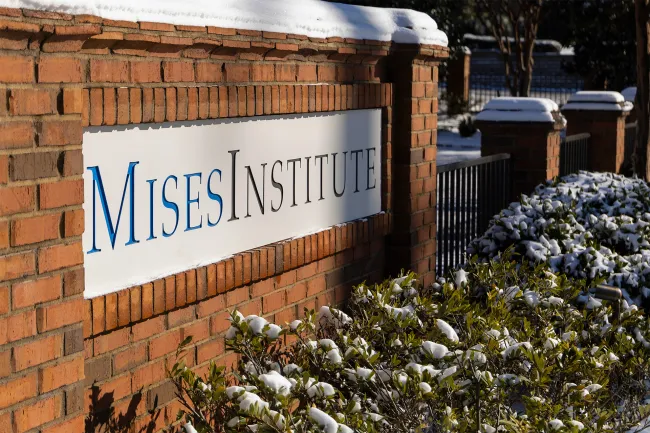Homer Simpson, Ray Romano, Randy Marsh, and Hal Wilkerson—all idiots. Good natured, bumbling, and well-intentioned, but idiots nonetheless. The clear implication is that these media-created dads are buffoons at best, and detriments to their own families at worst. Considering Peter Griffin of Family Guy has a stated IQ of 70, these near-neanderthals are certainly unnecessary in family life—except as an easy punchline used to cue the laugh tracks. Of course, the aforementioned half-wits are offset in media portrayals, not with wholesome, discerning, and forthright fathers. Rather, they are counterbalanced with “toxic” characters like Reese Bobby, Royal Tenenbaum, and Lucious Lyon. As cultural commentators have pointed out, fathers are either “comically inept” or “cruelly dominant.” Either way, paternalism is “reduced to extremes” and they are certainly not fit as husbands or fathers. They are all, in a word: useless.
For Terry Schilling—one of the speakers of NatalCon 25—these dumb-dad tropes are evidence that fathers and fatherhood are severely undervalued in our current culture. He reasons that if fatherhood is unattractive, then this prevailing attitude would naturally contribute to the ongoing decline in fertility rates. These caricatures and devaluing portrayals are, for Schilling, a clear message that men are neither needed or desired in domestic life.
One of the outcomes of this set of cultural mindsets is that men are demoralized into what he calls the “destruction-distraction industrial complex,” characterizing it as a set of “predatory industries.” He further explains that this nexus of addictive tech, free porn, online gambling, and gaming fixations couple with broader messaging on masculinity in the culture that combine to form a negative feedback loop. Men who engage in these self-destructive patterns are indeed less fit for marriage than those who don’t. They become the very caricatures that the media portray them as, and they indeed are undesirable as family men. Unable to find a suitable spouse, they are further demoralized into this doom loop as a sort of self-fulfilling prophecy.
Schilling’s address to those gathered at NatalCon proposed a sort of third way approach to releasing men from this cultural quagmire that combines both policymaking and cultural transformation. However, in his admittedly brief presentation, he is short on specifics as to how to carry this out. He bemoans the influence of the corporate side of the destruction-distraction industrial complex, while giving less emphasis to the government’s role in the complex. Citing the rise of smartphones, massive advertising budgets for sportsbooks, corporate digital targeting, and other elements, he implies that the solution for what’s ailing young men is for more robust regulatory measures to reign in these technologies and the firms that develop them. Furthermore, as with many pro-natalists, he calls for increased state intervention to marriage rates as a means to boost baby production. He calls on government to provide “extreme levels of support for families.” More specifically, he asserts that policymakers should spend at least as much on incentivizing marriage and fertility as is spent on corporate subsidies.
Unsurprisingly, there is a positive relationship between marriage and fertility rates. In fact, Lyman Stone of the Institute for Family Studies (IFS) has estimated that 75 percent of the global fertility decline is attributable to the reduced marriage rate as its proximal cause. Further, the probability of childless marriages reached a peak at the tail end of the stagflation of the 1970s in the US, only to be reached again in the era of covid hysteria. In short, more young men—enslaved to the destruction-distraction industrial complex—lead to fewer marriages and fewer births. But even those who do get married are more likely to have childless marriages than at any time in American history, save the Carter years. As a result, both Schilling and Stone call for pro-natalist interventions in light of these statistics. Schilling bluntly concludes that, “the United States also needs a serious pro-marriage agenda that will dramatically improve the economic and social supports and opportunities for young people to pair off and start families.”
However, the idea that any sort of intervention—itself generated by threats and coercion—would somehow generate love within a household, from fathers to children specifically, is a non-sequitur. There isn’t any such thing as coerced love. Rather, what both Lyman and Schilling are identifying is that the value of fatherhood, which is by definition a non-compensatory form of work—call it a labor of love—is devalued through the mechanisms that emerge in the inflation culture.
It’s been pointed out that, in such a culture, the value placed upon both paid labor activities in the market and in unpaid ones in the home are discounted. This is true for both the unpaid roles of motherhood and fatherhood alike. When coupled with the welfare state, the absence of fathers becomes a household income premium, while driving more and more mothers into the paid labor force. This indeed offers an explanation for the so-called “Feminization ‘U’” offered up by Nobel laureate, Claudia Golden, and those who’ve followed her research agenda. Rather than female labor force participation rates being deterministically driven by industrialization, the rapid rise in this metric began with its nadir in—you guessed it—the early 1910s, at the birth of the Federal Reserve. In fact, all household and unpaid labor has been devalued by the financialization of the economy, spurred by the central bank.
For all their merits, the speakers and topics at NatalCon 25 have been long on details bemoaning fertility decline and state interventions to address the problem, but it has come up short in recognizing the underlying causes of the demoralization and devaluation of fathers and mothers alike. Striking at the root of financialization, and the discounting of these bedrock relationships, will go much farther in maintaining a civilized society than any form of intervention ever could.


